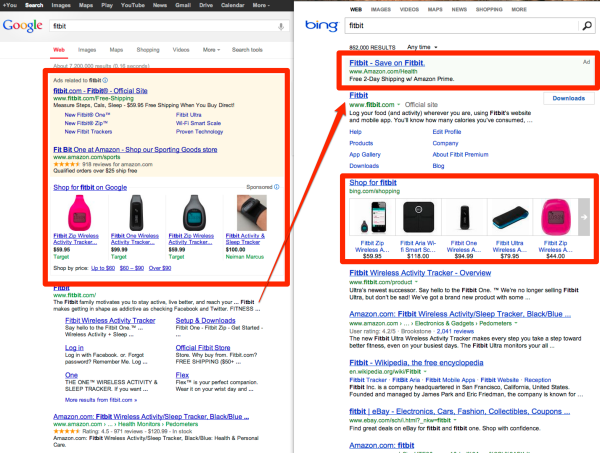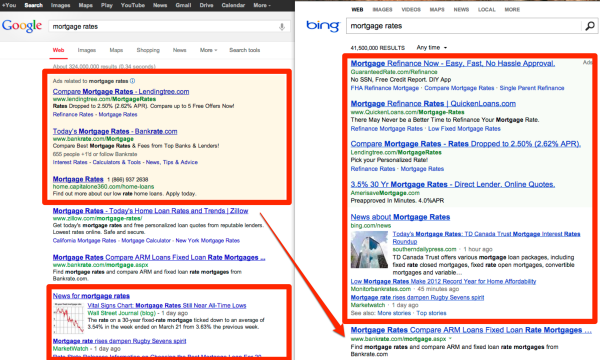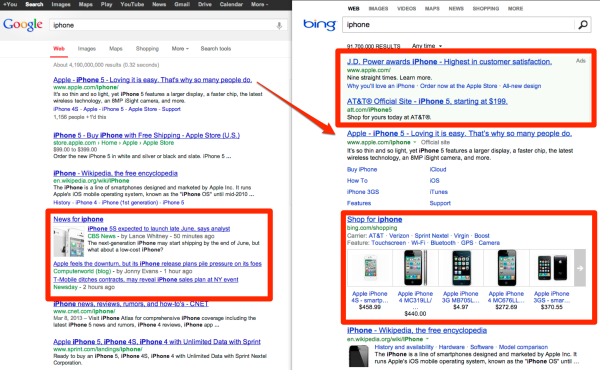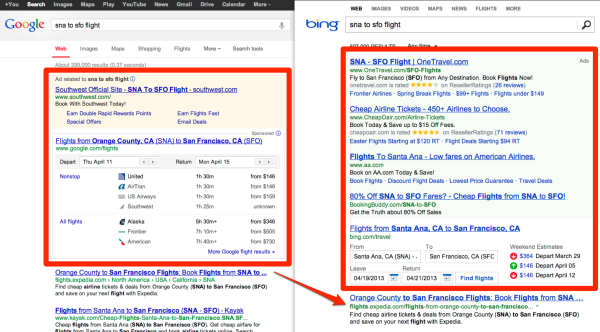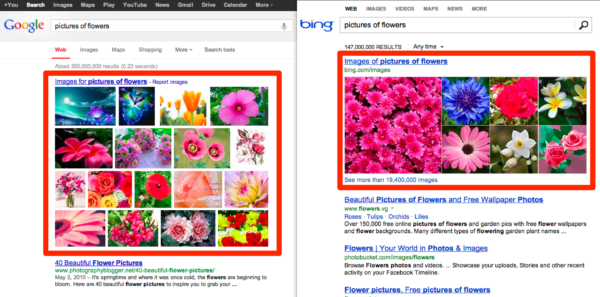Microsoft “Research” Discovers The Obvious In Renewed Anti-Trust Attack On Google
Did you know that the higher a site is listed in search results, the more traffic that site is likely to receive? If you’re a search marketer, or anyone with a dose of common sense, you do. But Microsoft had research conducted to yet again prove this point, in an attempt to influence the ongoing […]
 Did you know that the higher a site is listed in search results, the more traffic that site is likely to receive? If you’re a search marketer, or anyone with a dose of common sense, you do. But Microsoft had research conducted to yet again prove this point, in an attempt to influence the ongoing EU antitrust review against Google.
Did you know that the higher a site is listed in search results, the more traffic that site is likely to receive? If you’re a search marketer, or anyone with a dose of common sense, you do. But Microsoft had research conducted to yet again prove this point, in an attempt to influence the ongoing EU antitrust review against Google.
Microsoft’s Hired Gun Does Research
In a Microsoft blog post today, Susan Athey, a Microsoft consultant and professor of economics at Stanford University’s Graduate School of Business, writes about how she worked with those from Microsoft’s Bing search engine to conduct a “special experiment” where “the best search result” that the “algorithms would otherwise place first” were moved to lower positions on the page. It ran for a few weeks in the US and in other countries.
You might remember Athey from last year, when I wrote about how she mistakenly said that Google requires Google Search to be the default on Android. What’s her research showing this time? The further down the page a listing appears, the less traffic it receives compared to being top ranked.
Lower Listings Get Less Traffic
From Microsoft’s blog post:
Moving the best result down just two positions (from first to third) reduced traffic to that site by half.
The diversion effect becomes much more pronounced as a site is moved further down the page. A site that is moved from the first position to the tenth position typically will lose about 85 percent of its traffic.
A site that is moved from the second position to the ninth loses about 75 percent of its traffic.
Similarly, sites that are listed higher than before gain traffic:
A site promoted from fifth to first gets a 340 percent increase in visitors from search, and the results are similar when you focus only on users who go to the site and stick around for a period of time. Imagine telling a business that they can more than quadruple their customer base overnight!
Many studies over the years have shown the same thing, such as this one from 2010. Here’s a history of them over time. In fact, so many have been done we often don’t bother reporting on them. It’s like reporting that the sky is blue.
What’s New? Nothing But A Not-So-Hidden Attack
So, Microsoft’s research is breaking absolutely no new ground here. Indeed, as I said earlier, it’s only confirming what common sense tells anyone — something Microsoft itself admits in the post:
While the results of this study quantify the impact of what most people know intuitively, they demonstrate that the order and manner in which a search engine presents results powerfully affects how much traffic websites will receive.
So what is new? That Microsoft has laced this report with language like “manipulation” and “divert” that’s designed to support its contention, one that it has typically made through supporting proxy companies and organizations, that Google is pushing its own content over “better” things. You know, because as the report says:
That is a very tempting thing to do for a search engine if the site it is promoting is its own affiliated website.
Microsoft goes on at the end of the post to say it has submitted the study to the EU for review, out of its concern:
The manipulation of results to preference a search engine’s own products and services is one of four areas of concern identified by competition authorities investigating Google’s business practices in Europe, where the world’s largest Internet company controls more than 90 percent of the search market.
According to Joaquin Almunia, the European Commission vice president responsible for competition policy, “Google displays links to its own vertical search services differently than it does for links to competitors.”
Vice President Almunia explained that “[w]e are concerned that this may result in preferential treatment compared to those of competing services, which may be hurt as a consequence.”
Microsoft Does What Google Does (And Sometimes Worse)
Indeed, Google does display links to its own vertical search results differently. So does Bing. With that, let me supplement Microsoft’s research. Let’s do some side-by-side searches. First, a search for “fitbit” on Google and Bing:
On the left is Google, and the big red box outlines where Google has pushed something “above” the “best” result determined by its algorithm, which is the first unpaid result leading to the Fitbit site. What’s above it? Ads, then further ads that are part of its all-ads Google Shopping service.
In contrast, while Bing also has an ad above Fitbit, there are fewer of them. Microsoft’s own partially ad-powered shopping results come after Fitbit. Hurray! Microsoft’s Bing beats Google in “diverting” less. But then again:
In the search above for “mortgage rates,” Google’s ads again push down the “best” match from Zillow. But Bing’s ads, then Bing own news results, pushes the “best” result from Bankrate almost off the visible page.
Ads can make a big difference. Consider this search:
Here, Google isn’t showing ads about Apple in a search for “iphone” (they appear on the side). Bing is showing them above Apple (and to the side), so the “best” result is pushed down more than on Google.
Do this for other searches, by the way, and Google might be worse than Bing with more ads. Indeed, in all of these cases, you can search and search to come up with examples that seem to position one service over the other. That’s the point — neither is right or wrong but more the same.
Pressing on, both Google and Bing have their own flight search services:
The screenshot above shows how in both cases, these services push the “best” result of Expedia far down the page in a search for “sna to sfo flight.” Expedia is a bit further below on Bing, because Bing’s own services take up more space.
Finally, there’s this:
That’s a search for “pictures of flowers” on both Google and Bing, and it shows how they both push down the “best” results by deliberately putting actual pictures of flowers above a webpage listing. How arrogant. How manipulative. How favoring their own image search engines.
And how correct for the user. That’s what the Microsoft study deliberately avoids, the entire concept that vertical search can be helpful, can be beneficial to the user, that Bing does it for these reasons itself. In fact, that benefit to the consumer is the reason the US Federal Trade Commission found nothing wrong with Google having vertical listings earlier this year.
It’s pretty clear that Microsoft is worried that the EU, which is long overdue for making its ruling regarding Google, may go the way that the FTC did, in clearing Google. This report is designed to add pressure. But then, I’m just stating another obvious fact, like the report itself.
Contributing authors are invited to create content for Search Engine Land and are chosen for their expertise and contribution to the search community. Our contributors work under the oversight of the editorial staff and contributions are checked for quality and relevance to our readers. The opinions they express are their own.
Related stories
New on Search Engine Land
